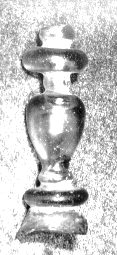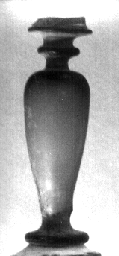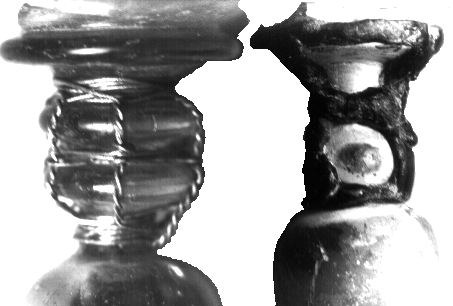



The glasses in this section have much in common with those in group one, so these notes should be read in conjunction with those for that group. The stem shown above on the left is probably a very early example, shown by its thick metal, coarse features and the remains of a high foot. This compares with a mid-century example on the right. Both have an extra collar above the 'cigar' stem. Some early versions of the stem also have pronounced vertical ribbing. There are stems with wrythen moulding on them, which are presumed to be later by comparison with other groups, but there does not appears to be any evidence to substantiate this. Also presumed to be late is the one known example with metal foil inside. Whether this is silver foil or tin foil has not been established. Bowl and foot types appear to be identical to those of section one. The differences in bowls shown in the classifications is just thought to be a matter of chance survival. Unlike the mould-blown stems, which require the glass to be blown very thin, cigar stems could be much more robust and were suited to the new cristalline glasses introduced c 1670. One example has survived made from this kind of glass.
The illustrations below show two different types of period repairs; that on the left using gold-covered wire, whilst that on the right uses a metal collar, thought to be lead. These were found in Bagshot in an excavation of an early 17th century inn by the Surrey Heath Archaeological and Heritage Trust. The first type of repair appears unique, but examples of the latter type have been found in London and Oxford. They appear to use similar techniques, but whether they are the work of one travelling craftsman or represent a common side-line for glasiers is uncertain. That it was worth repairing these glasses at all emphasises their value. It also shows a change between the way glass was valued in the late 16th century; it was a sign of wealth that you could afford to use - and break - these precious items; to valuing them for their utility.

This page talks about this sort of glass and includes a classification of all the variations we know about. If you know of any other variations please let us know, so we can keep the list up-to-date.
For notes on the 17th Century glass classification used Click here. In common with other early seventeenth century glasses, the basic form of this stem includes a strengthening merese at both the stem-to-bowl and the stem-to-foot junctions.